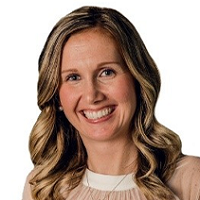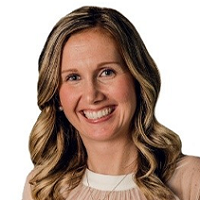Are Your Savings Just Going to Taxes?
Don't give away more than you have to. Put tax-efficient investing strategies to work.


There’s a quote from an old Morgan Stanley ad that gets passed around a lot at tax time: “You must pay taxes, but there’s no law that says you gotta leave a tip.”
Savers, especially, should pay heed to this advice.
Taxes already take a chunk of your earnings — the more you make, the more you pay (in most cases). But that burden can be even heavier for those who save and invest.
From just $107.88 $24.99 for Kiplinger Personal Finance
Become a smarter, better informed investor. Subscribe from just $107.88 $24.99, plus get up to 4 Special Issues

Sign up for Kiplinger’s Free Newsletters
Profit and prosper with the best of expert advice on investing, taxes, retirement, personal finance and more - straight to your e-mail.
Profit and prosper with the best of expert advice - straight to your e-mail.
For example, if you have investments such as mutual funds that aren’t in an IRA/Roth IRA and are generating annual income, that money, in most situations, is 100% taxable. If you didn’t know that, and were surprised when a 1099-DIV showed up in the mail, you may have some re-evaluating to do.
How much of a difference can a tax-efficient portfolio make?
Let’s say there’s a 20-year-old with $100 received from a mutual fund dividend, and he pays 30% (25% federal and 5% state) in taxes. He’s left with just $70.
Next, let’s look at his twin brother’s account. He has assets in the same amount, but it’s been structured in a way so that 50% isn’t taxable. He’s paying $15 in taxes — 30% of $50 — and ends up keeping $85 instead of $70.
For a younger person, that tax savings is important because of the compounding interest; if you’re keeping more, you’re likely investing more, and you’re probably earning more.
Even if these brothers got the exact same rate of return on the exact same dollar amount, the one with the tax-efficient portfolio is going to likely end up with more money in retirement.
Now, let’s go bigger — and older.
Recently, we had a woman come in with a $1.5 million portfolio — all stocks, bonds and mutual funds, no municipal bonds or any tax-advantaged vehicles. All of the money was non-qualified (or non-retirement), and therefore all of the income being created was taxable. Her adviser told her that when she reaches retirement, her portfolio will provide $40,000 in income each year.
But that isn’t a complete picture. I ran the numbers and showed her: With that $40,000 in income, and paying 30% in taxes ($12,000), she’ll really be living on only $28,000.
If she had a 50% tax-efficient portfolio, she’d keep $34,000 instead of that $28,000. Which one would you rather be living on?
Unfortunately, this seems to be the message a majority of the population doesn’t hear. Instead, much of their focus goes to rate of return or that big number at the bottom of those quarterly statements.
But even if the rate of return on your mutual fund is 7% or more, you’re not getting all of that. That’s not the net. And if that big dollar amount is bumping you into a higher tax bracket, you’re not keeping as much as you could.
In the end, it isn’t about how much you make, it’s about how much you keep.
Your financial adviser can help you find tax-wise ways to help shield your assets and still use income-producing assets such as municipal bonds, interval funds, alternative investments, IRAs, real estate and other strategies. Get an analysis of your portfolio to help ensure the money you’ve put away to build a better future doesn’t end up costing you at tax time.
Kim Franke-Folstad contributed to this article.
The article and opinions in this publication are for general information only and are not intended to provide specific advice or recommendations for any individual. Please consult with your tax and/or legal adviser for such guidance.
Examples are for illustrative purposes only and may not be indicative of your situation. Your results will vary.
Securities offered only by duly registered individuals through Madison Avenue Securities, LLC (MAS), Member FINRA & SIPC. Advisory services offered only by duly registered individuals through Brighter Financial Capital Management, LLC, a SEC Investment Advisor. Insurance products and services are offered through Clark & Associates, Inc. Financial Solutions, an affiliated company. Brighter Financial Capital Management, LLC and MAS are separate entities, independently owned.
The appearances in Kiplinger were obtained through a PR program. The columnist received assistance from a public relations firm in preparing this piece for submission to Kiplinger.com. Kiplinger was not compensated in any way.
Related Content
Profit and prosper with the best of Kiplinger's advice on investing, taxes, retirement, personal finance and much more. Delivered daily. Enter your email in the box and click Sign Me Up.

Megan Clark is CEO an Executive Wealth Manager at Clark & Associates Inc. Financial Solutions and is an Investment Adviser Representative and Insurance Professional. As a financial adviser, she is passionate about helping families create a holistic financial plan and she often holds "For Women By Women" informational seminars to reach out and help assist women in pursuing their goals. Clark is a graduate of the University of Virginia. (Securities offered only by duly registered individuals through Madison Avenue Securities, LLC (MAS), Member FINRA & SIPC. Advisory services offered only by duly registered individuals through Brighter Financial Capital Management, LLC, a SEC Investment Advisor. Insurance products and services are offered through Clark & Associates, Inc. Financial Solutions, an affiliated company. Brighter Financial Capital Management, LLC and MAS are separate entities, independently owned.)
-
 I'm want to give my 3 grandkids $5K each for Christmas.
I'm want to give my 3 grandkids $5K each for Christmas.You're comfortably retired and want to give your grandkids a big Christmas check, but their parents are worried they might spend it all. We ask the pros for help.
-
 If You're Not Doing Roth Conversions, You Need to Read This
If You're Not Doing Roth Conversions, You Need to Read ThisRoth conversions and other Roth strategies can be complex, but don't dismiss these tax planning tools outright. They could really work for you and your heirs.
-
 Could Traditional Retirement Expectations Be Killing Us?
Could Traditional Retirement Expectations Be Killing Us?A retirement psychologist makes the case: A fulfilling retirement begins with a blueprint for living, rather than simply the accumulation of a large nest egg.
-
 I'm a Financial Planner: If You're Not Doing Roth Conversions, You Need to Read This
I'm a Financial Planner: If You're Not Doing Roth Conversions, You Need to Read ThisRoth conversions and other Roth strategies can be complex, but don't dismiss these tax planning tools outright. They could really work for you and your heirs.
-
 Could Traditional Retirement Expectations Be Killing Us? A Retirement Psychologist Makes the Case
Could Traditional Retirement Expectations Be Killing Us? A Retirement Psychologist Makes the CaseA retirement psychologist makes the case: A fulfilling retirement begins with a blueprint for living, rather than simply the accumulation of a large nest egg.
-
 I'm a Financial Adviser: This Is How You Can Adapt to Social Security Uncertainty
I'm a Financial Adviser: This Is How You Can Adapt to Social Security UncertaintyRather than letting the unknowns make you anxious, focus on building a flexible income strategy that can adapt to possible future Social Security changes.
-
 I'm a Financial Planner for Millionaires: Here's How to Give Your Kids Cash Gifts Without Triggering IRS Paperwork
I'm a Financial Planner for Millionaires: Here's How to Give Your Kids Cash Gifts Without Triggering IRS PaperworkMost people can gift large sums without paying tax or filing a return, especially by structuring gifts across two tax years or splitting gifts with a spouse.
-
 'Boomer Candy' Investments Might Seem Sweet, But They Can Have a Sour Aftertaste
'Boomer Candy' Investments Might Seem Sweet, But They Can Have a Sour AftertasteProducts such as index annuities, structured notes and buffered ETFs might seem appealing, but sometimes they can rob you of flexibility and trap your capital.
-
 Quick Question: Are You Planning for a 20-Year Retirement or a 30-Year Retirement?
Quick Question: Are You Planning for a 20-Year Retirement or a 30-Year Retirement?You probably should be planning for a much longer retirement than you are. To avoid running out of retirement savings, you really need to make a plan.
-
 Don't Get Caught by the Medicare Tax Torpedo: A Retirement Expert's Tips to Steer Clear
Don't Get Caught by the Medicare Tax Torpedo: A Retirement Expert's Tips to Steer ClearBetter beware, because if you go even $1 over an important income threshold, your Medicare premiums could rise exponentially due to IRMAA surcharges.
-
 I'm an Insurance Pro: Going Without Life Insurance Is Like Driving Without a Seat Belt Because You Don't Plan to Crash
I'm an Insurance Pro: Going Without Life Insurance Is Like Driving Without a Seat Belt Because You Don't Plan to CrashLife insurance is that boring-but-crucial thing you really need to get now so that your family doesn't have to launch a GoFundMe when you're gone.